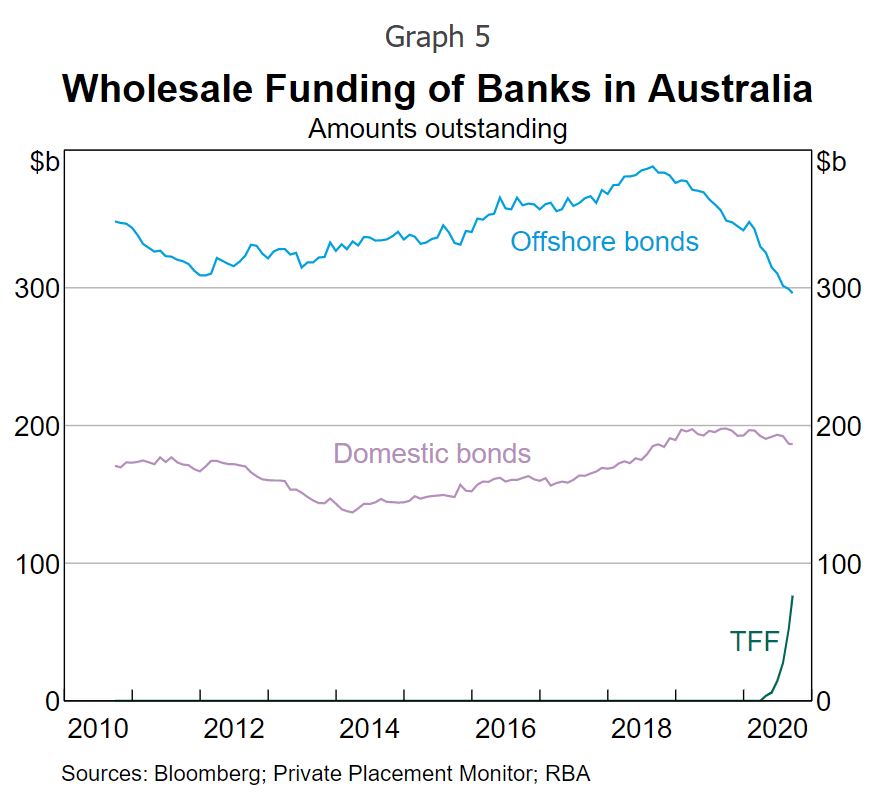Rentier HQ at the AFR, governed by “businessomics” doyen Michael Stutchbury, is in no doubt who should get the free “monopoly money”. It is not you:
…using monetary policy to support the economy should not be confused with “funding” any level of fiscal policy stimulus by issuing Monopoly money.
…As Reserve Bank governor Philip Lowe told a parliamentary committee last month, modern monetary theory is actually designed to return to when budget policy was the main policy instrument for managing the business cycle. As Lowe recalled, the history of using an inherently politicised policy instrument that way was not good.
The current crisis is, by definition, an extreme case. Monetary policy already has been pushed beyond its useful limit, and risks destabilising the economy by inflating asset prices, as it did in Australia after the 1987 sharemarket crash. Reining in that asset price boom led to Keating’s recession we had to have.
While monetary policy is exhausted, there is no “neoliberal” reluctance in the Reserve Bank, nor the Keynesian-tinged Treasury, to call for massive amounts of temporary government spending to hold the economy together during the pandemic shutdown. Australia’s modest levels of government debt by international standards makes that possible, even for a capital-importing and commodity-exporting country.
At the parliamentary hearing, Lowe told Greens leader Adam Bandt that the government should and could readily fund its spending spree by borrowing in the market. The governor rightly reckoned that leaning on the central bank to conjure up the Monopoly money would amount to MMT “financial trickery”.
What Stutch does not mention (given banks are big advertisers) is that the RBA is already pouring tens of billions of “monopoly money” into the banks. Indeed, it recently increased its capability to do so to $200bn. During the pandemic panic, the RBA launched the Term Funding Facility (TFF) which charges only 0.25% and is already displacing their private wholesale funding at a terrific clip:
At the rate that the Morrison Government is cutting fiscal spending, the great likelihood is that TFF capacity will have to be doubled again in due course so that the banks can keep swapping wholesale funding that costs 1-2% for free RBA “monopoly money”. That is the only way that their margins can support further mortgage rate cuts.
Don’t get me wrong. We need to cut the cash rate below zero to drive down the Australian dollar to have any hope of recovery, not to mention rebalancing away from Chinese exports. But all of this “monopoly money” for banks doesn’t do that and it raises a whole bunch of questions in political economy terms such as:
- Why are the banks allowed free public “monopoly money” to make private profits?
- Bank liabilities and risk is effectively being nationalised so where is the equivalent equity stake for taxpayers?
- Why is it a great idea to give banks “monopoly money” to provide more and cheaper mortgages to massively indebted households that will kill productivity via higher lands costs etc? But it’s not OK to give it to the government to invest it in useful stuff like productivity-enhancing infrastructure?
Make no bones about it. The RBA is already rapidly heading back to 1970s monetary policy with the only difference being that a private cartel benefits rather than the government or populace. The notion that it is independently setting a price for debt is done. There is no price. Every RBA meeting these days amounts to one simple question: “how much public “monopoly money” shall we give the banks today to fund more mortgage crack?” Going that way ensures it will never hike rates again.
Sure, mortgage holders will benefit as the banker’s monopoly on “monopoly money” enables them to cut mortgage rates further. But, higher house prices and household debt are only going to make inequality and secular stagnation worse. If we do need to offer banks “monopoly money” to lower mortgage rates then it should be while tightening macroprudential policy so that the easing is used to deleverage households as smoothly as possible. Then the lower yield structure is all shoved into a lower AUD. The mushrooming China decoupling makes this ever more important.
But APRA is not going to do that. It doesn’t even consider its role in such matters, given it is broken away from the RBA. Which is why the two regulators desperately need to be slammed back together.
The AFR under Stutch asks none of these questions. Indeed, it explicitly shuts them down via a small army of RBA cockroaches whose only job is to sustain access. In Stutch’s “businessomics” paradigm all private ownership is all good, all of the time. Even when it is an oligarchic bailout rife with moral hazard, rent-seeking, and rorting of public funds that is clearly contrary to the national interest.


